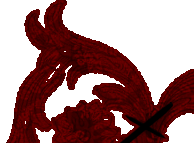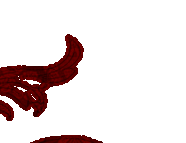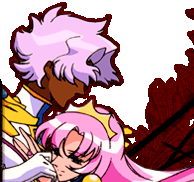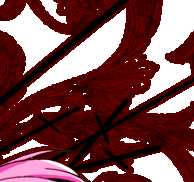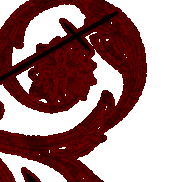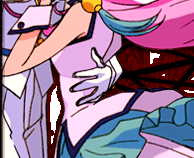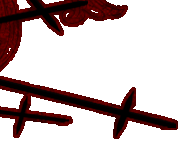
REVOLUTIONARY GIRL UTENA
This analysis
was donated by Nicole K. Toivonen Winchester.

Revolutionary Girl Utena was published as a manga by Saitô Chiho in 1996 and produced as an anime in 1997 by Ikuhara Kunihiko and the Be-Papas collective, broadcast on Tokyo’s Channel 12 for thirty-nine weeks from April 2 through December 24.42 The story follows Tenjou Utena, orphaned as a child and given a rose-engraved signet ring by a travelling prince. The prince promised Utena that they would one day meet again; inspired by his nobility and kindness, Utena decided to become a prince herself. Years later, Utena enrolls as a student at Ohtori Academy in her search for the prince. She is drawn into duels fought by the school's Student Council, whose members wear rings identical to Utena’s. The victor of the duels becomes engaged to Anthy Himemiya; a girl known as the “Rose Bride” with the “power to revolutionize the world.”43 In this and other works, Ikuhara draws on a wide range of influences: French New Wave directors like Jean-Luc Godard, director David Lynch,44 writers Terayama Shūji and Miyazawa Kenji,45 the all-female Takarazuka musical revue,46 Anno Hideaki and Neon Genesis Evangelion,47 and Dezaki Osamu’s Rose of Versailles, although both Ikuhara and Saito deny this connection.48 Utena has two other direct influences in Hermann Hesse’s Demian, a novel about illusion, duality, and enlightenment49 and Ikuhara’s own ideas for a yuri (girl’s love) follow up to the Sailor Moon Super S movie, abandoned when he left Toei.50 What initially seems like a conventional shōjo romance influenced by fairy tales delves into subjects as diverse as radical feminism, adolescent psychological development, postmodern literature, and death, judgement, and the end of the world.51 Kotani argues that part of the success of Revolutionary Girl Utena lies in its blurring of the boundaries between the two worlds of shōjo and shōnen via its girl prince, cleverly exposing the structure of sexuality implicit in manga for girls.52 Ikuhara has acknowledged he is aware of the contradictory nature of a male director telling stories about girls, feminism, sexuality, and identity. He says he was visited at age fourteen by a UFO that ordered him to make anime about “girls revolutionizing various things,” and when he asked what would happen if he ever told anyone about the visit, the aliens said: “People will call you a sketchy guy.”53 Ikuhara’s cogent awareness of the irony of male control of shōjo – a genre that tells girls how to exist in Japanese society – has allowed him to create thoughtful and subversive work within its strictures and structures.
Go back to Index - Next Page

42 Kotani, p. 162.
43 Kunihiko Ikuhara, ‘Shōjo Kakumei Utena’, Shōjo Kakumei Utena (Japan: TV Tokyo, 1997). 44 Bridges, p. 9.
45 DREX, ‘Kunihiko Ikuhara’, Spotlight on Film, 2015 https://spotlightonfilm.wordpress.com/2015/05/08/kunihiko-ikuhara/ [accessed 5 October 2021]. 46 Andrearitsu, ‘Between The Revues: Takarazuka 101’, Andrea Ritsu, 2018 https://andrearitsu.com/2018/09/07/between-the-revues-takarazuka-101/ [accessed 5 October 2021]. 47 Justin Sevakis, ‘ANN: Interview with Utena Creator Kunihiko Ikuhara’, trans. by Noriko Furuhata, Empty Movement https://ohtori.nu/creators/a_sevakis.html [accessed 5 October 2021]. 48 ‘Ikuhara & Saito Audio Commentary: Episode 38’, Empty Movement http://ohtori.nu/creators/a_e38.html [accessed 5 October 2021].
49 ‘Fifty Shades of Pink: The “Revolutionary Girl Utena” Rewatch, Part 2’, Deus Ex Magical Girl, 2016
https://deusexmagicalgirl.com/2016/10/23/fifty-shades-of-pink-the-revolutionary-girl-utena-rewatch-part-2/ [accessed 5 October 2021]. 50 DREX.
51 Bridges, p. 9.
52 Kotani, p. 167.
53 Bridges, p. 19.
  |

